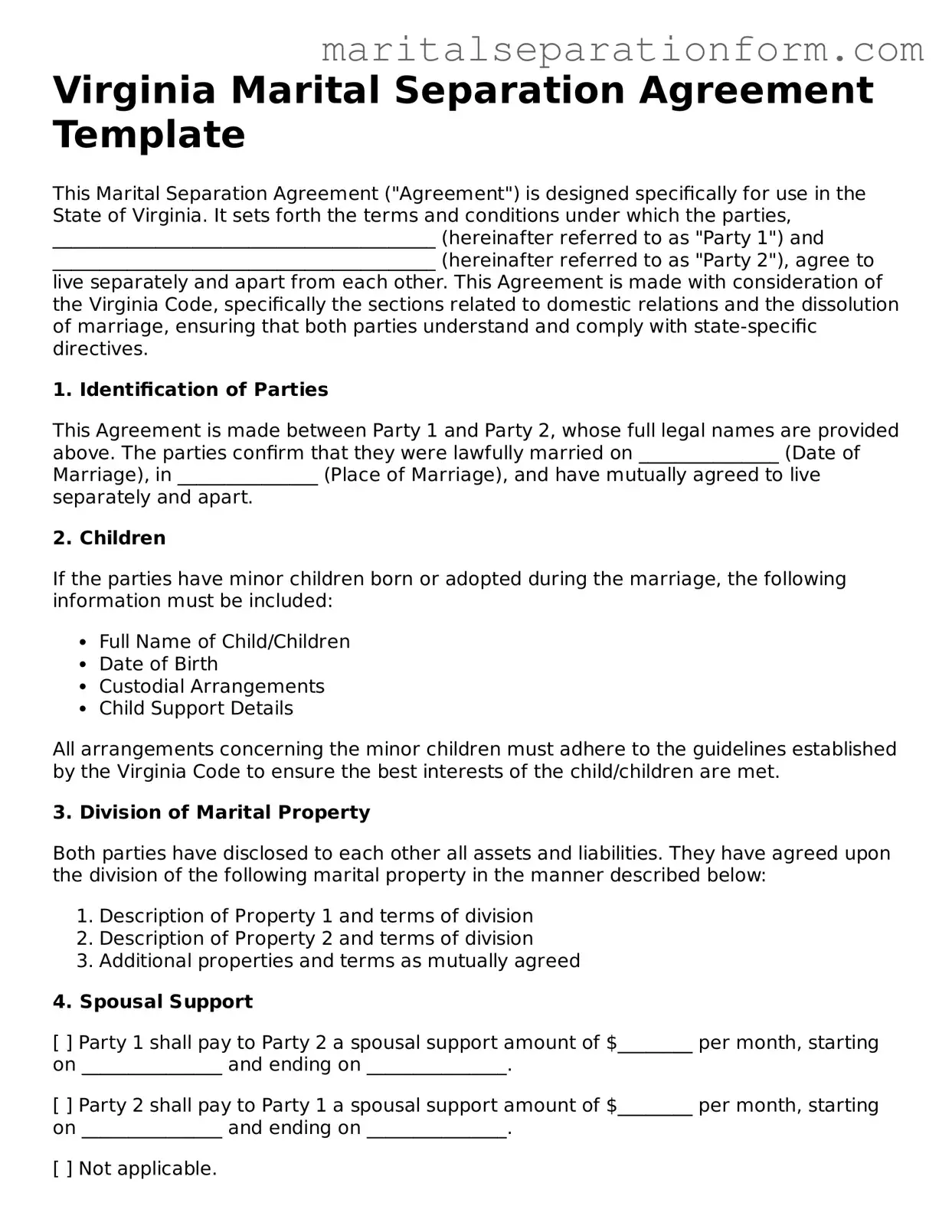What is a Virginia Marital Separation Agreement?
A Virginia Marital Separation Agreement is a legal document that outlines how a married couple has agreed to divide their assets, debts, and other responsibilities following their decision to live apart but remain legally married. It can cover a variety of areas, including child custody, child support, spousal support, and the division of property.
Do we need a lawyer to create a Marital Separation Agreement in Virginia?
While it's not required to have a lawyer to create a Marital Separation Agreement in Virginia, it's highly recommended. A lawyer can ensure that the agreement complies with state laws and fully protects your interests. However, some couples choose to draft their agreement themselves or with the help of a mediator.
Is a Marital Separation Agreement the same as a divorce in Virginia?
No, a Marital Separation Agreement is not the same as a divorce. The agreement is a step that a couple can take before divorce, outlining the terms of their separation. It does not legally end the marriage. A divorce, on the other hand, dissolves the marriage legally.
How do we file a Marital Separation Agreement in Virginia?
Once both parties have agreed upon the terms and signed the Marital Separation Agreement, it should be notarized. After notarization, the agreement does not need to be filed with the court to be effective. However, if you later decide to divorce, the agreement can be submitted to the court and can often be incorporated into a final divorce decree.
Can a Marital Separation Agreement in Virginia be changed once it's been made?
Yes, a Marital Separation Agreement can be modified, but both parties must agree to the changes. If both parties agree, they can amend the agreement in writing with the modifications, sign the new document, and have it notarized.
What happens if one spouse does not follow the Marital Separation Agreement in Virginia?
If one spouse fails to follow the terms of a Marital Separation Agreement, the other spouse may file a motion with the court to enforce the agreement. The court can then order the non-compliant spouse to comply with the agreement's terms or face legal consequences, such as contempt of court charges.
Do we have to live separately to have a Marital Separation Agreement in Virginia?
Yes, in Virginia, to have an enforceable Marital Separation Agreement, you typically must live separately from your spouse. Living separately means residing in different locations; it is not enough just to live in separate rooms in the same house.
How does a Marital Separation Agreement affect the divorce process in Virginia?
A Marital Separation Agreement can streamline the divorce process by resolving many issues upfront, such as property division, child custody, and support arrangements. If the court approves, the agreement may be included in the final divorce decree, making the process quicker and less contentious.
What should be included in a Virginia Marital Separation Agreement?
A comprehensive Marital Separation Agreement in Virginia should include terms covering the division of marital property and debts, child custody and visitation arrangements, child support, spousal support (if applicable), and any other issues relevant to the couple's situation. It's crucial to address all potentially contentious issues to prevent future disputes.
